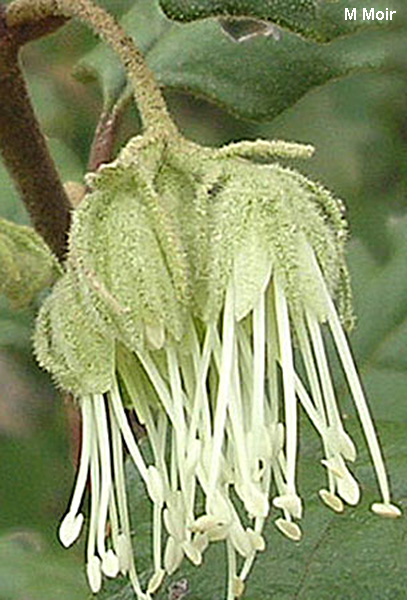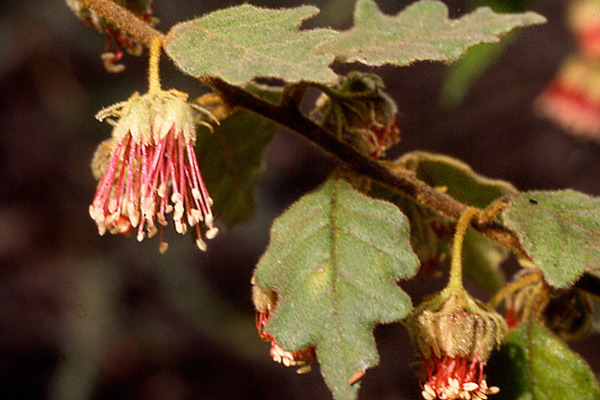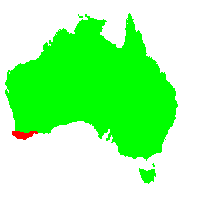General Description:
A native shrub that many in the southwest will be familiar with is the Chorilaena, sometimes called the karri oak locally because its leaves resemble those of an oak tree (though karri oak more generally means the sheoak that grows in the karri forest – a somewhat different plant!).
The genus Chorilaena is monotypic, that is has only one species but it is closely related to the genus Diplolaena (see Diplolaena microcephala). Both are members of the Rutaceae which means they are related to the boronias and correas, although the relationship can be difficult to appreciate to the casual observer!
Chorilaena quercifolia is found as an understorey shrub in Karri forests, generally from 1 to 4 metres high by 1 to 3 metres wide. The lobed leaves are 2-4 cm long by 1-3 cm wide with densely hairy undersurfaces. The pendulous flowerheads occur late spring and early summer and are 1 by 1.5cm. The flowers are surrounded by many narrow bracts and are generally green, though white, red and even pink forms have been seen.
Although much admired in the bush, few people seem to know what a great garden shrub this plant makes. It flowers for a very extended time, sometimes all year, and birds are attracted to the flowers for nectar – especially smaller birds such as the spinebills. The foliage is extremely attractive and always admired, even by those that don’t normally like “natives”.
It is very adaptable, being happy in sun or shade, moist or dry, most soils, even growing right at the coast, where it is a compact low shrub. It accepts pruning to any size, is very pest resistant, and is not at all palatable to kangaroos. Furthermore, unlike many Western Australian plants, it has proven reliable in areas of summer humidity such as Sydney.
Propagation is best carried out from cuttings which usually strike reliably.

Chorilaena quercifolia – Green-flowered Form
Photo: Margaret Moir

Chorilaena quercifolia – Red-flowered Form
Photo: Brian Walters
 Australian Native Plants Society (Australia)
Australian Native Plants Society (Australia)













